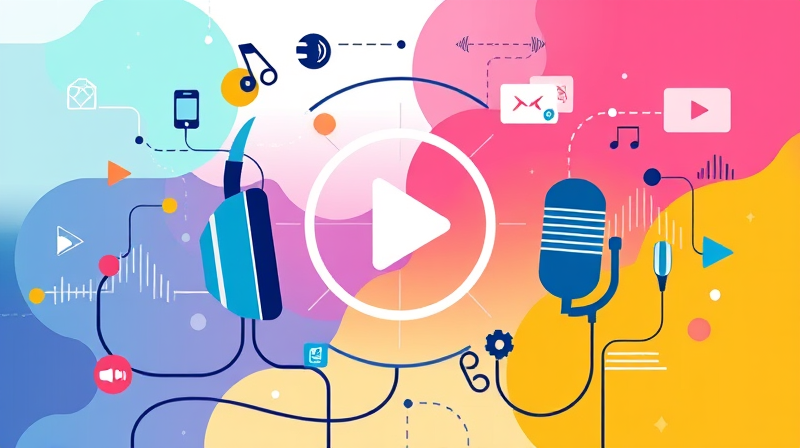In today's fast-paced information age, it is easy to get overwhelmed by a constant stream of news. However, developing the skills to identify bias and engage in balanced media consumption can help you build a well-rounded understanding of current events and avoid the pitfalls of echo chambers.
Media bias subtly influences what we know and how we perceive the world. It can easily distort our grasp of facts when certain viewpoints are emphasized over others. Recognizing these biases is not just an academic exercise—it's a practical tool that empowers you to think critically and make informed decisions.
Understanding Media Bias
Media bias occurs when information is presented in a manner that reflects particular ideological leanings. Whether subtle or overt, these biases manifest in various ways through the selection of topics, tone, and framing of content.
Selection of topics: Media outlets may choose to focus on certain issues while overlooking others that are equally important. This selective coverage can influence public opinion by highlighting some stories over others.
Tone and language: The emotional undertones in language can steer audience perception. Words chosen for their connotations, rather than their literal meaning, may accentuate the bias present.
Framing: How facts are presented is as important as the facts themselves. Through framing, the media can infuse a particular interpretation, subtly nudging the audience toward a specific viewpoint.
By understanding these patterns, you arm yourself with the tools needed to critically evaluate media reliability and fairness.
Practical Tips for Spotting Bias
- Diversify Your Sources: Relying on a single news outlet increases the risk of receiving a skewed perspective. Follow a mix of media platforms across the ideological spectrum to see diverse interpretations of events.
- Analyze Tone and Framing: Scrutinize articles for how language and structure might be used to push an agenda. Identifying emotional language and biased framing can reveal underlying biases.
- Focus on Facts Over Opinions: Differentiate between objective news and opinion-based pieces. Fact-check platforms are essential tools in assessing the credibility of reported information.
- Be Critical of Headlines: Headlines often serve as the gateway to bias. Evaluating whether the article truly supports the headline’s claims can help reveal discrepancies.
- Understand Media Ownership: Investigate the background, funding, and ownership of media outlets. This research offers context into potential biases driven by the source's financial or political agendas.
Implementing these strategies can help you navigate a complex media landscape more effectively. Remember, the aim is to consume information in a way that enriches your understanding instead of confining your perspective.
Balanced Media Consumption for a Healthy Mind
To maintain a balanced view, it is essential to curate and manage your media consumption consciously. This involves selecting diverse sources, setting boundaries, and engaging thoughtfully with the news.
Curate Content Deliberately: Identify and subscribe to a broad range of reliable sources that reflect different viewpoints. Doing so not only broadens your perspective but also helps in understanding the multi-faceted nature of news events.
Set Time Limits: Allocate specific times throughout the day to check the news. Regular breaks and digital tools like "Screen Time" and "Digital Wellbeing" can reduce the risk of information overload.
Engage in News-Free Activities: Balance your digital life with offline activities. Whether through exercise, quality time with family, or reading non-news literature, these activities can greatly improve mental well-being.
Reflect on Emotional Reactions: If you find that certain news segments evoke negative feelings such as anxiety or frustration, take a step back. This awareness not only protects your mental health but also refocuses your media consumption habits.
As you implement these habits, ask yourself critical questions like: "Am I exposed to diverse viewpoints?" and "Does the content present factual information or opinion?" Such reflective practices lead to a more mindful engagement with media.
Leveraging Technology for Informed Media Consumption
Modern technology offers incredible tools to help uncover media bias. AI-driven platforms like the Media Bias Detector analyze articles on various levels, from language and tone to topic selection and framing, providing detailed insights into inherent biases.
Using these tools not only sharpens your analytical skills but also reinforces the habit of seeking multiple perspectives. This dual approach empowers you to navigate the complex media environment confidently.
Finally, understanding that media consumption is not just about staying informed but also about personal well-being is key. Encourage yourself to question, verify, and diversify the information you encounter daily.
Through continuous practice and self-reflection, you can transform your media consumption into a powerful exercise in learning and growth, ultimately leading to a more balanced, informed view of the world.
Remember, the journey toward responsible media consumption is ongoing. With the right techniques and tools, you can peel back the layers of bias and uncover the truth beneath the headlines, empowering yourself with the knowledge needed to make well-informed decisions.








